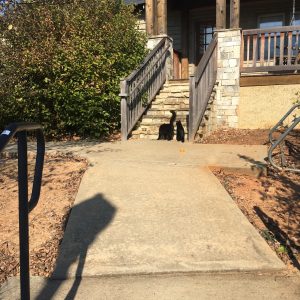Living in the Greenbelt Community gives you opportunities to learn and practice sustainability during the week, but weekends are also a great time to extend sustainable habits into your free time, especially when it comes to partying. Here are some ways Adel and I have changed our weekend routines to be more sustainable.
- Getting Ready
- Perfumes and Cologne: Brief history lesson, until the production of Chanel No. 5, most perfumes didn’t contain synthetic ingredients. Afterwards, however, they became prevalent in most perfume brands. Organic perfumes are a lot more common than you would think. Even Rue21 has an eco-friendly line of perfume, and most brands that attempt to be more environmentally friendly will have labels.
- Other Products: You can use websites like the Skin Deep Cosmetic Database to check what harmful chemicals might be in your shampoos, conditioners, makeup, and other products.
- Clothes: If you’re worried about the carbon footprint of laundry, try not using to the dryer to lessen your impact. It’s better for your clothes, and you can reduce your emissions by more than half. Not using a dryer results in 0.7 kg CO2e if washed at 40°C and dried on a line. With a dryer, it’s 2.4 kg CO2e if washed at 40°C and tumble-dried in a vented dryer.
- Carpooling
- Carpooling with friends to parties or downtown Greenville is a great way to reduce vehicle emissions.
- Recycling
- Buying Beverages: Not so fun fact about the Greenville area, we can’t recycle glass. So if you’re buying soda, beer, liquor, or other beverages, try to buy plastic or aluminum so you can recycle it.
- Coffee: If you go to a Star Bucks for your coffee, and even other coffee places, you’ll notice that the cups and lids tend to have recycle symbols on them. Here in Greenville, our recycling center is perfectly capable of recycling the cups, but the plastic lids have a 6 within the recycling symbol, telling you what classification of material it falls under. However, this type of plastic isn’t recyclable in this area. Try bringing refillable cups to Star Bucks or other coffee places. Many offer great discounts if you do! In addition, for anyone who likes lattes or other milk-based drinks, try substituting dairy for soy or almond milk as a more sustainable and healthier alternative.
- Frat Parties: There’s nothing wrong with partying or drinking on the weekends, but frat parties off campus generate a lot of empty beer and soda cans. Try going to the house parties that recycle regularly, and if not, try suggesting recycling bins to the others.
- Restaurants:
- Try going to restaurants that serve local food. Though eating out does increase your carbon footprint, it’s still a good idea to support businesses that try to adhere to sustainable practices like sourcing locally grown foods. My main recommendation is Southern Pressed Juicery in downtown Greenville, which makes gourmet smoothies and acai bowls that are all vegan and made from locally grown ingredients. They’re really good!
Hope these tips were helpful! 🙂

